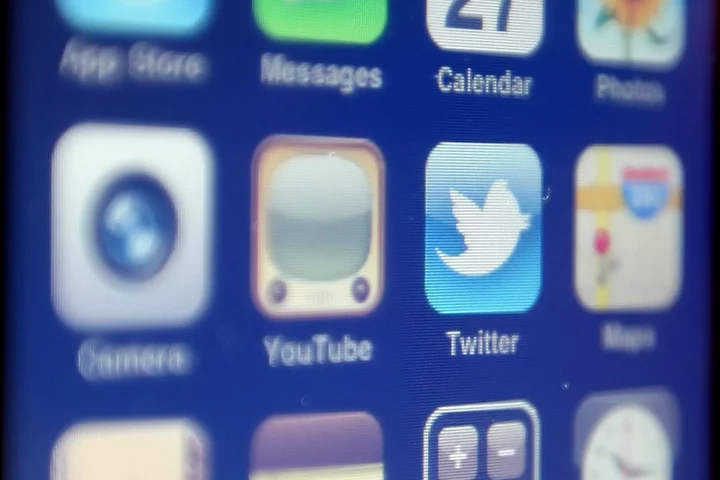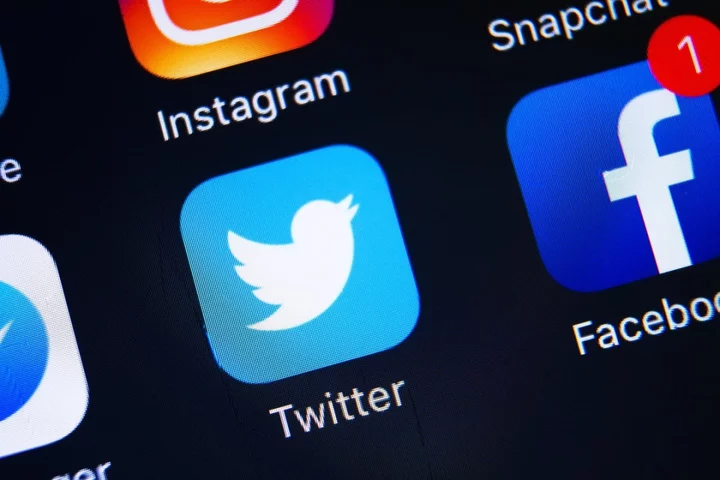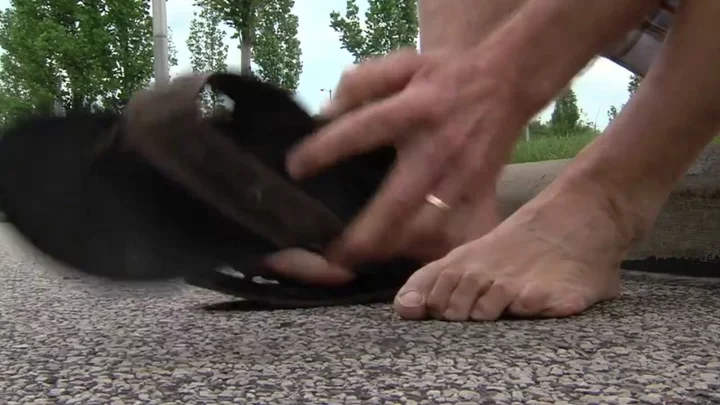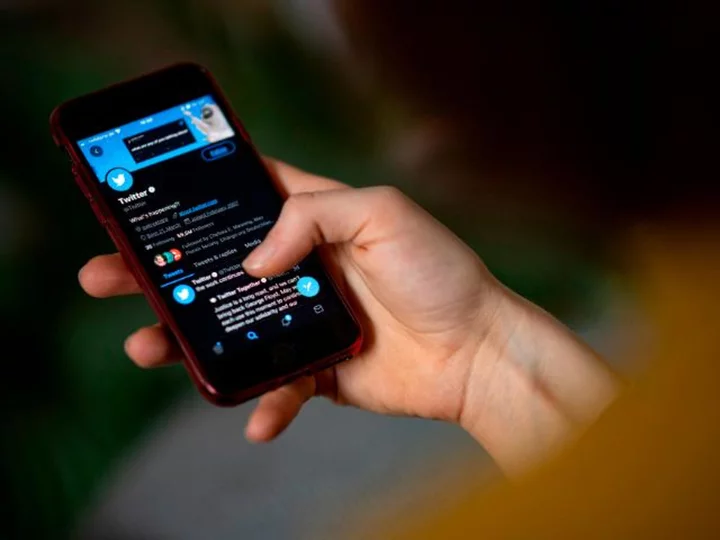
‘Rage-baiting’ leftist Twitter account is probably fake, expert says
A popular left-wing Twitter account with thousands of followers, which often went viral and provoked the outrage of leading conservatives, may have been a fake all along, according to online researchers, using a provocative posts to generation attention in a tactic known as “rage-baiting.” Erica Marsh, a self-proclaimed “proud Democrat” from Washington, started her Twitter account in September of 2022, and quickly gained more than 130,000 followers, sometimes netting over 1,000 followers a day posting her quick-twitch takes on the day’s main political news. Her messages often read like a near-parody of an over-the-top, out-of-touch progressive. In a 29 June post, reacting to the recent Supreme Court decision striking down race-based affirmative action in college admissions, she wrote, “Today’s Supreme Court decision is a direct attack on Black people. No Black person will be able to succeed in a merit-based system which is exactly why affirmative-action based programs were needed. Today’s decision is a TRAVESTY!!!” The tweet quickly caught fire online, provoking the ire of leaders like Florida congressman Matt Gaetz, who told his followers, “I strongly disagree with this racist allegation.” However, despite her ability to win followers and stir the pot and attract online attention, Ms Marsh may never have been real, according to an analysis from The Washington Post. Ms Marsh doesn’t appear in phone or voting records, and past employers she claimed like the Biden campaign say they have no record of her. “I strongly suspect that this person doesn’t exist,” John Scott-Railton, a senior researcher at the Citizen Lab at the University of Toronto, told the paper. “It’s as if she dropped from the moon and arrived fully formed with this narrative that makes liberals look like idiots.” Twitter officially does not comment on press requests, and Ms Marsh’s account has been suspended. Before buying the social media site last year, Elon Musk argued fake accounts were a serious problem on Twitter, at one point threatening not to carry out his acquisition over the matter. Twitter said last July it removes over 1 million fake accounts per day. Fakes have been a persistent issue. In November, the company temporarily suspended its Twitter Blue subscription service, after users bought Twitter verification status and used it to impersonate celebrities, politicians and brands. Read More ‘Rate limits’ and Twitter chaos: What exactly is Elon Musk doing? Elon Musk supports eliminating voting rights for people without children Greg Abbott mocked after falling for hoax story about Garth Brooks being booed off stage Judge blocks Biden agencies from communicating with social media platforms Elon Musk supports eliminating voting rights for people without children Outrage erupts in South Africa over video of deputy president's security officers stomping on man
2023-07-05 03:23

Monday Was the Hottest Day Ever as Global Temperatures Rise
Global temperatures hit a record on Monday, underscoring the dangers of ever-increasing carbon emissions generated from burning fossil
2023-07-05 03:22

Trump-appointed judge blocks Biden agencies from communicating with social media platforms
A federal judge has blocked key agencies within President Joe Biden’s administration from communicating with social media companies about certain online speech in an extraordinary ruling as part of an ongoing case that could have profound impacts on the First Amendment. The preliminary injunction granted by Donald Trump-appointed US District Judge Terry A Doughty in Louisiana on 4 July prohibits the FBI and the US Department of Health and Human Services, among others, from speaking with platforms for “the purpose of urging, encouraging, pressuring, or inducing in any manner the removal, deletion, suppression, or reduction of content containing protected free speech.” The ruling – which could obstruct the administration’s attempts to combat false and potentially dangerous claims about vaccines and elections – is a victory for Republican attorneys general in Louisiana and Missouri who have alleged that the federal government was overreaching in its attempts to combat Covid-19 disinformation and baseless election fraud narratives. Judge Doughty, who has yet to issue a final ruling, stated in his injunction that the Republican plaintiffs “have produced evidence of a massive effort by Defendants, from the White House to federal agencies, to suppress speech based on its content.” He did make some exceptions that would allow the government to warn platforms about national security threats, criminal activity or voter suppression. The legal challenge follows ongoing allegations from right-wing officials and Republican lawmakers that the federal government – specifically, Democratic officials – have conspired with “Big Tech” to silence conservative voices, a long-running conspiracy theory that proponents will argue is substantiated by the latest decision. GOP attorneys general in the case have accused government agencies of a “systemic and systematic campaign” to control speech on social media platforms that accelerated during the Trump administration and experienced a “quantum leap” under President Biden. Attorneys for the Biden administration have disputed such claims and warned that an injunction could undermine national security efforts, pointing to the programs developed among government agencies to combat disinformation in the aftermath of the 2016 election. The Independent has requested comment from the White House. Missouri’s Attorney General Eric Schmitt, who originally filed the lawsuit with Louisiana’s Attorney General Jeff Landry, called the ruling a “big win for the First Amendment on this Independence Day.” Though the case originated with those Republican officials, several additional plaintiffs added their name to the case, arguing that they also were unfairly targeted after spreading disinformation online. Plaintiffs also include vaccine conspiracy theorist and presidential hopeful Robert F Kennedy Jr and Jim Hoft, the founder of the far-right conspiracy theory-fuelled website The Gateway Pundit and a defendant in a defamation lawsuit filed by election workers who faced death threats over false reporting about them in the 2020 presidential election. This is a developing story Read More Twitter applies temporary reading limits amid ongoing problems with platform Biden renews call for assault weapons ban after ‘tragic and senseless’ spate of July 4 shootings Ex-New York congressman pardoned by Trump is planning to run again in Florida Suspicious powder found at the White House when Biden was gone was cocaine, AP sources say Biden renews call for assault weapons ban after spate of July 4 shootings Watch live: Joe Biden addresses National Education Association
2023-07-05 03:17

Twitter Says Ads Mostly Unaffected by Limits That Target Bots
Twitter said its temporary cap on the number of tweets that accounts can see each day has had
2023-07-05 02:48

How to delete your Twitter account
Many of Twitter’s users are looking to move on in the wake of the site’s latest chaos. In recent days, Elon Musk has announced that his site will apply “rate limits” in an attempt to stop data scraping on the site, by automated tools including those used to train AI systems. But in effect that has meant that Twitter has stopped working properly for many of the people who rely on it. After the latest backlash, some of those users are looking to leave the site entirely, and move instead to other alternatives. As they do, they might wish to delete their account to avoid leaving data and posts up online after they leave. But deleting Twitter is not as easy as you might think. The first step is for a user to deactivate their Twitter account, which starts a process during which the user can decide if they actually want to go through with it. When a user deactivates their Twitter account it is no longer visible on Twitter, but if a log-in is carried out during a specified reactivation period then the account remains useable. Once the reactivation period is over then another Twitter user will be able to utilise the username. Before deleting Twitter account the user can download a copy of their information by going to Your account and selecting Download an archive of your data. Deleting Twitter on iPhone or mobile web. 1. Open Twitter app or go to Twitter.com. 2. Tap profile picture. 3. Choose Settings and privacy and select Your account. 4. Chose Deactivate your account 5. Choose reactivation period - 30 days or 12 months. 6. Read disclaimer and select Deactivate 7. Enter password and follow prompts to delete account. Deleting Twitter account on web 1. Open Twitter.com 2. Click on three dot icon on left 3. Choose Settings and privacy and select Your account 4. Choose reactivation period - 30 days or 12 months 5. Read disclaimer and select Deactivate 6. Enter password and follow prompts to delete acount Read More How to delete your Twitter account What does Twitter’s rate-limiting restriction mean? ‘Rate limits’ and Twitter chaos: What exactly is Elon Musk doing? Twitter to stop TweetDeck access for unverified users Meta’s Twitter alternative Threads to be launched this week How Elon Musk finally broke Twitter – and why it might just be the start
2023-07-05 00:25

Time ran five times slower in the early universe, new study finds
New findings have revealed that time ran five times slower in the early universe, after scientists published new research into quasars. A quasar is a luminous active galactic nucleus and studying them has allowed scientists to measure time. The variation in brightness of quasars from the early universe has been measured to determine time dilation back to a billion years after the Big Bang. Experts have found that there was an era in which clocks moved five times slower than they do in the present day. The findings come as a relief to many cosmologists who have been perplexed by previous results that have come from studying quasars. The discovery that the universe is expanding led to the theorisation of “time dilation” – the idea that time moved slower the smaller the universe was. Sign up to our free Indy100 weekly newsletter Professor Geraint Lewis of the University of Sydney, the lead author of a new study, said in a statement: “Looking back to a time when the universe was just over a billion years old, we see time appearing to flow five times slower.” He continued, explaining: “If you were there, in this infant universe, one second would seem like one second – but from our position, more than 12 billion years into the future, that early time appears to drag.” To measure the extent of time dilation, scientists turned to quasars, as they are able to measure their change in brightness over a period they can estimate. The most distant quasar that is visible is 13 billion back in time and can still be seen despite its far distance. Their brightness varies due to turbulence and lumpiness in their accretion disks. Lewis explained the phenomenon as being “a bit like the stock market”. He said: “Over the last couple of decades, we’ve seen there is a statistical pattern to the variation, with timescales related to how bright a quasar is and the wavelength of its light.” Have your say in our news democracy. Click the upvote icon at the top of the page to help raise this article through the indy100 rankings.
2023-07-04 23:59

World registers hottest day ever recorded on July 3
By Gloria Dickie Monday, July 3, was the hottest day ever recorded globally, according to data from the U.S. National
2023-07-04 23:45

Foot doctor reveals why you shouldn't wear flip-flops, even in summer
For many of us, flip-flops are synonymous with sunny days, whether we’re by the pool or meeting friends at the pub. But an expert has rained on the parade of summer’s most ubiquitous footwear by pointing out the significant flaws in their design. Taking to TikTok, Singapore-based podiatrist Paul Macaulay, explained why he, personally, would never wear the thonged slip-ons. However, he also had unfavourable things to say about a number of alternatives – so don’t ditch your flops for Crocs just yet. Sign up for our free Indy100 weekly newsletter In the clip, he singled out sandals made by the popular brand Havaiiana for featuring a number of red flags. “They’re very flat and very thin, they don’t offer much foot support,” he explained, adding that in order for a flip-flop to get his particular seal of approval they’d need to have “a bit of a heel cup”. He also criticised flip-flops that don’t have built-in arch support, and pointed out that the standard strap offers “no security to the foot”. “We want to see something with a strap around the heel, which will give more stability to the ankle and hold the foot in place, or even the style that has a strap coming over the front, which holds the foot down,” he said (so, good news for slider-fans). @paulthepodiatrist Macaulay also pointed out that the lack of support offered by classic flip-flops means that many people have to grip hold of the shoe with their toes to keep them on. “If you wear it for prolonged periods of time over many years, [your feet] can start to stiffen and claw up, and then that can be hard to reverse,” he warned. Finally, he warned that because they’re so open, flip-flops can dry out your feet. This can be particularly “high risk” for diabetics, he said, because “dryness can open to cracks, and those cracks can turn to wounds.” Still, he insisted, there’s a time and a place for the sandals – namely, for wearing on a trip to the beach or the pool. “If you're only walking, say like 500 to a thousand steps and you're not going to be massively physically active, then I'm all for it,” he said in a second TikTok. “But then for something like [...] you're going to walk like five miles, I'm not for it.” Macaulay’s also “not for” the following four shoe types, which he insisted he’d “never wear” as a podiatrist: slip-on loafers; stilettos; ballet pumps and strapless shoes. He didn’t explain why he wouldn’t wear them, however, so maybe it’s just a taste thing… @paulthepodiatrist Save yourself some problems and avoid these shoes! Podiatrist has warned you! There are better shoe options out there for you! #fypsg #foryoupage #fashion #shoes #feet #footpain #podiatrist And for anyone wondering what shoes they should wear, especially when the sun’s out, he has you covered there, too. In another TikTok, captioned: “Don’t regret your footwear choices this holiday”, he said “People don't realise that when you go on holiday you actually rack up so many steps, so it's really important this holiday season to get yourself a good pair of shoes.” His first recommendation was a sandal made by the company Keen which is made for “multi-terrain”. “You can wear these in a concrete jungle style city, somewhere like New York or Singapore, you can even wear these in a mountainous area, maybe like Snowdonia National Park or in the hills of Hong Kong,” Macaulay said. “What I like about it is the straps – it keeps your foot nice and tightly secure.” His second endorsement was for adidas’s Adilette adventure sandals, which he noted were cheaper and softer than his two alternatives. And finally, he gave a big thumbs up to Dr. Martens’ popular Voss sandals which he said he particularly liked because of their “thick, durable sole,” and “ideal” straps, coviering the foot, ankle and back of the heel. @paulthepodiatrist You dont want to end up with sore feet this holiday season! Check out my three top recommendations to stop blisters and painful feet this summer! #fypsg #fashion #shoes #sandals #summeroutfit #podiatrist #feet He wrapped up his video by reinforcing his point that: “These three options would make great additions to your holiday wardrobe for this summer.” So, in the end, it looks as though it’s time to trade in your flops for Docs, people. Have your say in our news democracy. Click the upvote icon at the top of the page to help raise this article through the indy100 rankings.
2023-07-04 23:22

‘Rate limits’ and Twitter chaos: What exactly is Elon Musk doing?
Twitter has been plunged into chaos in recent days, amid new “rate limits” and rules that actually stop people from using the site. The changes have been dramatic enough that they have led to speculation that they could be the thing to finally doom Elon Musk’s takeover of the social network. What are the ‘rate limits’? It is a somewhat technical term for a complex process that has a simple effect: users are rationed on how many tweets they can see. If people and the apps they use make too many requests too often – in this case for tweets – then the service will stop providing them. On Twitter, the new rate limits are different depending on what kind of user is on: someone who pays for the premium “Twitter Blue” service will get more than a normal user, for instance. They are also changing all the time, with the limit being increased recently. Twitter has long had rate limits, which ensure that malicious actors cannot send huge number of requests to the site and bring it down, for instance. But they would previously only have been hit by people using specific tools, since they were much higher. What happens when you hit the limit? Users will see a warning telling them they have received the rate limit. The site will then stop working properly, because it will refuse to load any more tweets. Why has it happened? The official explanation is that Elon Musk is concerned about how many artificial intelligence companies are scraping posts from Twitter in order to feed to their systems and teach them more about how to use language. In an attempt to stop that, Mr Musk placed the limits to make it harder for that scraping to happen. But there is no proof that is actually the case. The problems at Twitter may well be infrastructural issues caused by the site’s engineering, and its lack of staff, that have made it incapable of serving normal requests. Or it might be a mix of the two. There is no doubt that the site is being scraped, but rate limits of this kind are an unusual way of responding to it, and other sites that are being scraped have not needed to do the same thing. Are there other changes? The other major change instituted recently by Elon Musk is to ban people who are not signed into the site from seeing posts. This is ostensibly for the same reason, since it means that scrapers cannot just gather up posts from the site from the outside. It already means that some things about Twitter are not working as they used to. If someone sends a tweet within a messaging app, for instance, then the posts’ preview won’t show, since the app cannot access the tweet. Will this change how people use Twitter? Almost certainly. Much of Twitter’s value lies in its high-profile and high-commitment users: the celebrities, organisations and big brands who use it to post, and the engaged users who follow them. That is much of what sustains its place in culture, even as it gets fewer users than much bigger social networks such as Facebook. The recent changes have directly antagonised those users. Big organisations cannot rely on tweets as a way for anyone to see what they’re posting, since users have to be logged in; engaged users cannot rely on being able to use the platform, since they are set to be rate limited. What’s more, the recent changes could cause problems for advertisers, given how important it is for users to stay engaged and see their posts. Companies are already using Twitter less for advertising, as a result of other controversies, and that may just continue. Is this the end? Some people have been predicting an end to Twitter since long before Elon Musk took it over; when he did, those predictions got louder and more regular, but they have still been largely wrong. It appears that no matter what Mr Musk does, people keep logging on and using the site. That might well be largely due to network effects: the idea that the value really comes from the number of people using the platform, which also makes it very difficult to create a new one. People might be unhappy on Twitter, but the network effect means they might feel lonely or that they are missing out if they move elsewhere. But all of that doesn’t mean that this time around won’t be the end. Certainly the latest problems have the most obviously problematic effect, of forcing Twitter’s most engaged users to not use the app, which might finally encourage them to go elsewhere. In the end, the discussion is often based on the idea that there will be some big moment that causes everyone to leave Twitter, or for the app to die. In fact, social networks have tended to decline slowly before they are finally shut down; something that might already be happening on Twitter. What are the alternatives to Twitter? Again, people have been trying to replace Twitter for years, for reasons including everything from protests against its content management rules to opposition to its centralised nature. Attempts to create a new Twitter have only increased since Elon Musk took over the original one. But they have almost always failed to take off. Network effects and the relative maturity of Twitter as a platform mean that they have always faced a challenge, and never really met it. As such there are a number of alternatives to Twitter. Notable among them are Mastodon, which is decentralised and has become perhaps the most discussed new alternative, and Bluesky, an effort to build a new kind of Twitter that originally began with the company. But the most promising alternative might be about to launch. Meta is launching Threads this week, an app linked to Instagram that aims to allow people to post text updates that might have the might to actually take over from Twitter. What is happening to TweetDeck? TweetDeck also went down along with Twitter over the weekend. It’s unclear how the two are connected, though they happened at the same time. Now Twitter has announced that TweetDeck is coming back. But it comes with some changes, and the most notable of them is that people will have to pay for Twitter Blue to get access to it. Read More Twitter to stop TweetDeck access for unverified users Meta’s Twitter alternative Threads to be launched this week How Elon Musk finally broke Twitter – and why it might just be the start Twitter rival Bluesky halts sign-ups after huge surge in demand Twitter is breaking more and more Twitter rival sees huge increase in users as Elon Musk ‘destroys his site’
2023-07-04 23:20

Scientists discover secret planet hiding in our solar system
There are eight planets in our solar system – plus poor old Pluto, which was demoted in 2006 – but what if there were more? Turns out that might be the case. Astronomers have calculated there is a 7 per cent chance that Earth has another neighbour hiding in the Oort cloud, a spherical region of ice chunks and rocks that is tens of thousands of times farther from the sun than we are. “It’s completely plausible for our solar system to have captured such an Oort cloud planet,” said Nathan Kaib, a co-author on the work and an astronomer at the Planetary Science Institute. Sign up to our free Indy100 weekly newsletter Hidden worlds like this are “a class of planets that should definitely exist but have received relatively little attention” until now, he said.. If a planet is hiding in the Oort cloud, it’s almost certainly an ice giant. Large planets like Jupiter and Saturn are generally born as twins. They have huge gravitational pulls of their own, however, and sometimes destabilise one another. That could have led to a planet to be nudged out of the solar system entirely – or exiled to its outer reaches, where the Oort cloud resides. “The survivor planets have eccentric orbits, which are like the scars from their violent pasts,” said lead author Sean Raymond, researcher at the University of Bordeaux’s Astrophysics Laboratory. That means that the Oort cloud planet could have a significantly elongated orbit, unlike the near-perfect circle Earth tracks around the sun. Trouble is, when things are that far away, they’re pretty difficult to spot. “It would be extremely hard to detect,” added Raymond. “If a Neptune-sized planet existed in our own Oort cloud, there’s a good chance that we wouldn’t have found it yet,” said Malena Rice, an astronomer at MIT not involved in this work. “Amazingly, it can sometimes be easier to spot planets hundreds of light-years away than those right in our own backyard.” Time to crack out the telescope. Have your say in our news democracy. Click the upvote icon at the top of the page to help raise this article through the indy100 rankings.
2023-07-04 23:15

Twitter to put TweetDeck behind a paywall
Another controversial change is coming to Twitter. Only verified users will soon be able to access TweetDeck, the dashboard that lets users views multiple different timelines, the platform tweeted Monday.
2023-07-04 23:15

AI takes just five hours to design functional computer
Researchers in China have developed an artificial intelligence tool capable of designing a working computer in under five hours. The team of 19 computer scientists from five different institutions made the AI breakthrough after setting out to prove that machines can create computer chips in a similar way to humans. The feat was performed 1,000 times faster than a human team could have achieved it, the researchers claimed, marking a major step towards building self-evolving machines. “Design activity... distinguishes humanity from other animals and traditional machines, and endowing machines with design abilities at the human level or beyond has been a long-term pursuit,” the scientists wrote in a paper detailing their research. “We present a new AI approach to automatically design a central processing unit (CPU), the brain of a computer, and one of the world’s most intricate devices humanity has ever designed.” The project involved the layout of an industrial-scale RISC-V CPU, capable of running the Linux operating system and achieving an accuracy of 99.99 per cent in validation tests. The AI bypassed the manual programming and verification process of the typical design cycle, which the researchers said “consumes more than 60-80 per cent of the design time and resources” of human teams. The AI was also able to autonomously make discoveries involving computer design, uncovering something called the von Neumann architecture, first invented in 1945. The overall performance of the CPU is relatively modest compared to modern computers, with the researchers saying it can perform at a similar level to a 1991 Intel 80486SX CPU. Developing the AI approach, however, has the potential to “reform the semiconductor industry by significantly reducing the design cycle”, the researchers said. The research is detailed in a study, titled ‘Pushing the limits of machine design: Automated CPU design with AI’. Leading AI chip maker Nvidia has previously used artificial intelligence to optimise its computer chip designs, publishing a new approach to AI-powered chip design in March that could significantly improve the cost and performance of CPUs. Read More 10 ways AI will change the world – from curing cancer to wiping out humanity Harvard’s new computer science teacher is a chatbot Google’s DeepMind unveils AI robot that can teach itself unsupervised Robots can now learn new skills like picking up knives by watching YouTube videos
2023-07-04 22:23
